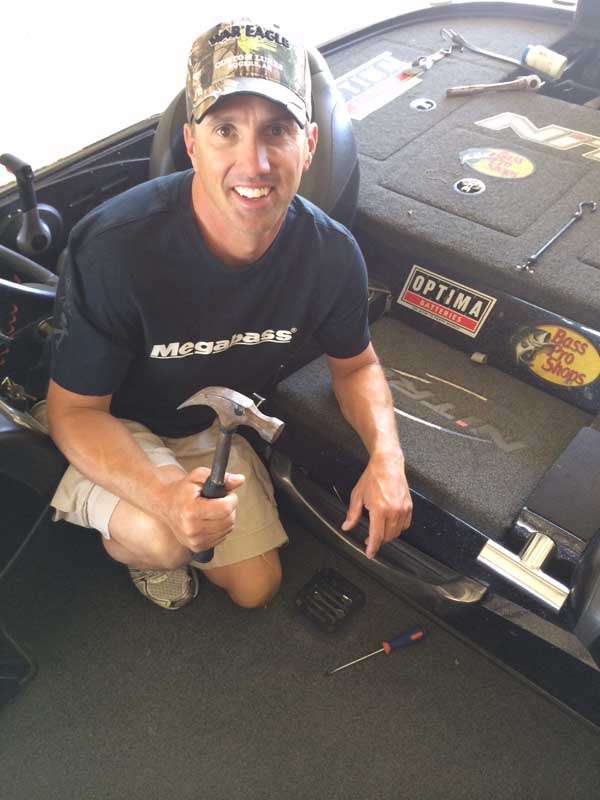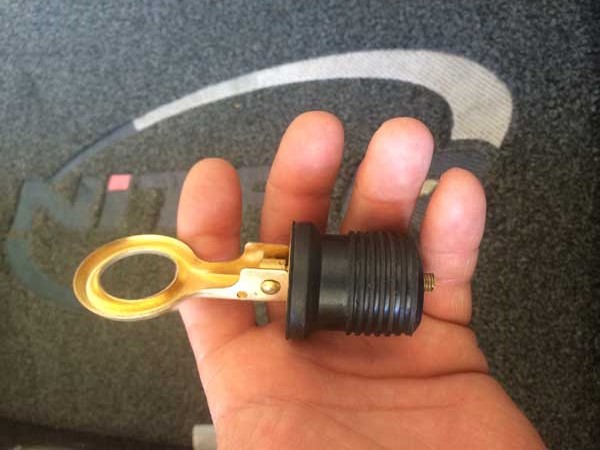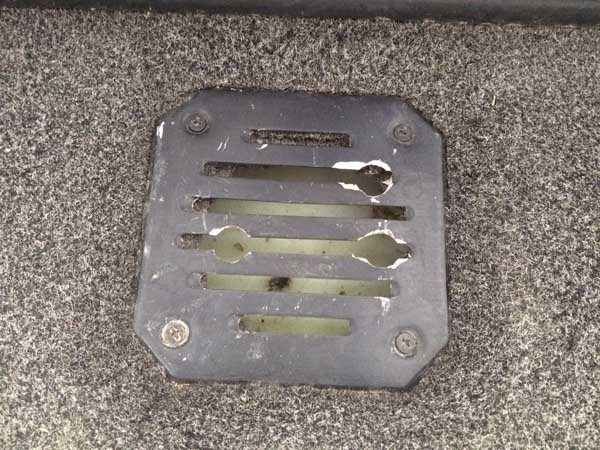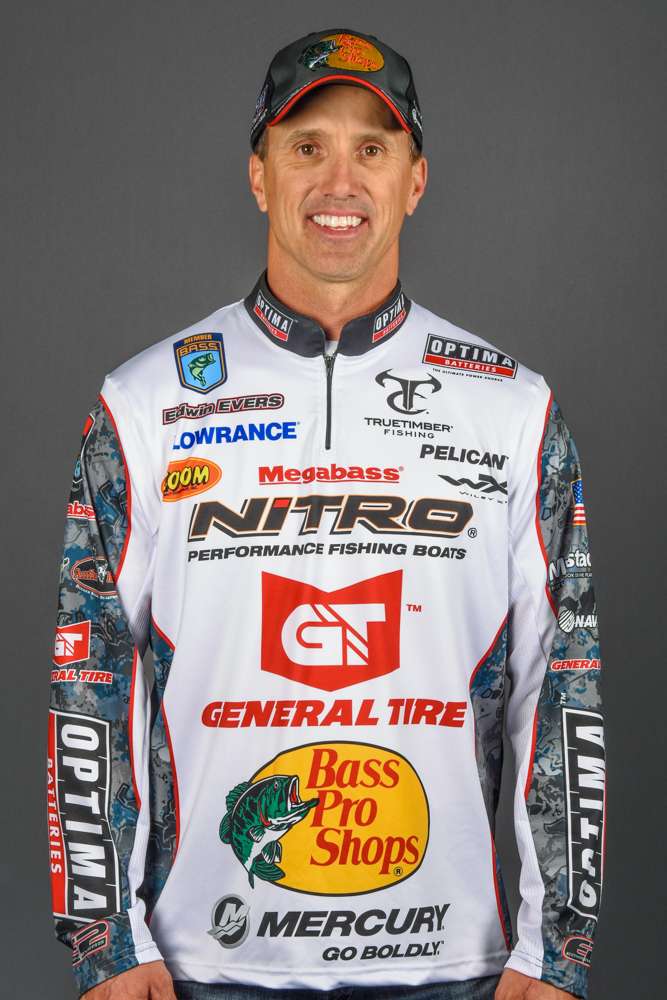
In the third part of this series on fishing in the wind, I want to tell you about some of the tools I use to make my fishing more productive on the days when the wind might seem like more of a hazard than a help. You might have some of these things lying around your boat or garage. Others might be worth a visit to Bass Pro Shops or an online order. Read on and decide what will work best for you.
Power Poles
Just a few years ago, every hardcore bass fisherman who was prepared to go fishing in windy weather carried a sea anchor. Unfortunately, they’re kind of bulky and awkward to deploy, and putting one back in the boat almost guarantees that you’re going to get wet. Luckily, we don’t need them anymore because most of us have a Power Pole and plenty of us have two Power Poles.
If you thought the Power Pole was just for anchoring in shallow water, I’ve got good news for you. The Power Pole can be your best friend when managing the wind. Just deploy it part way when the wind’s moving your boat a little too fast. The Power Pole creates lots of drag to slow you down. Experiment a little with how far you need to deploy it to get your drift speed just right.
And if you’re fishing in an area where wind is a regular issue, you might want to consider the Power-Pole Drift Paddle. It’s broad blades create even more drag and offer you even more control over your drift.
Pedestal Seat
Most of the time when I’m fishing, the only thing on the front deck with me are my rods and reels and electronics. But when they wind’s blowing or it might get rough, I make sure to put in my pedestal seat. There’s no substitute for the stability it offers in rough water.
It’s true that it takes up a little room and that it blocks your view just a little when you’re driving, but all these complaints are minor when you realize the pedestal will help you stay in the boat.
I fish for a living and consider myself to be pretty agile, but without a pedestal there’s just no comfort or stability in rollers and whitecaps. A pedestal is essential.
Staying Dry
With wind and rough water often come waves that come over the gunnels. Occasionally, you might even spear a wave rather than crest it. When that happens, stuff gets wet — including things you need to keep dry.

One of the most important things to keep dry is your cell phone. I keep mine in a Ziploc bag in the console compartment of my Nitro … and I don’t try to press the air out of it. I want as much air in the bag as I can get so that the phone will float if it somehow gets out of the compartment and finds its way into the water.
Another thing I want to keep dry no matter what are my spare clothes. Whether I need to change on the water or want some dry things for the drive home, spare clothes are essential, and they’re not much good to you unless they’re dry.
Bass Pro Shops and other manufacturers make terrific dry bags that will hold your spare clothes and fit into a dry storage compartment on your boat. And while dry storage compartments work great most of the time, they’re really only dry if the lids stay shut. If the lids pop open for any reason, all bets are off. A good dry bag can be worth its weight in custom-painted crankbaits.
Daily Checkups
I do a lot of regular maintenance on my boat, but when I’m going to be out in rough weather, I turn it up a notch. One of the things I’ll do every day is check the bolts on my transom. They can get loose when the boat takes a pounding from the waves (or even during long trailering runs). I also carry two big C clamps in case I snap a bolt and need a way to hold everything together until I get back to the ramp.
I even carry extra straps to hold my trolling motor down against the bracket on the front deck. The basic strap is enough almost all of the time, but on rough water it can pull loose. If your trolling motor gets to bouncing around, it can do a lot of damage.
And I should throw in a plug and big compliment to a sponsor here. My Optima batteries are the absolute best in rough weather. They operate flawlessly even when they get completely submerged, and their spiral technology makes them the most vibration-resistant batteries on the market. They take a pounding, but always give me the power I need to get out there, fish and get back.
Pumps, Drains and Plugs
When the wind’s blowing and the waves are rolling, you can really start to appreciate some of the things on your boat that you might otherwise take for granted — like bilge pumps. I have high capacity pumps on my Nitro that will get water out of my rig in a hurry. But in case one fails, I carry spares that I can change out in just a few minutes. I recommend that you carry spares, too.
And test your pumps before you go out on potentially rough water. It’s cheap insurance.
Speaking of pumps, they won’t do their job very well if the water’s not getting back to them. For that, you need working drains.
The drains on a modern bass boat look great. They’re sleek and color-coordinated and do a fine job most of the time. But if I anticipate that there might be a lot of water in my boat, I unscrew the factory drain and temporarily replace it with one I’ve specially modified … with a hammer.

All I’ve really done is knocked out about half the slats in the drain so that it allows water to pass through faster and is less likely to clog with the stuff that tends to accumulate in the bottom of a boat. It’s not as pretty as the factory-issue drain, but it sure looks good when you see the water pulling through fast and easy.
In rough water it’s easy to think about yourself, but don’t forget your fish. They take a beating, too, especially when your boat is bouncing around at strange angles as you make that final run to the weigh-in. If the run’s a long one, you might get there to find that most of the water that was in your livewell is now somewhere else (hopefully the bilge pumps have taken care of it). That means trouble for your fish. To protect them, I carry an oversized drain plug for the overflow hole in my livewell. It keeps the water where it needs to be and protects my catch.
I hope this series on the wind has helped you. Just remember: stay safe, stay dry and make the wind work for you.
Do you have any tips or tools for coping with the wind?





